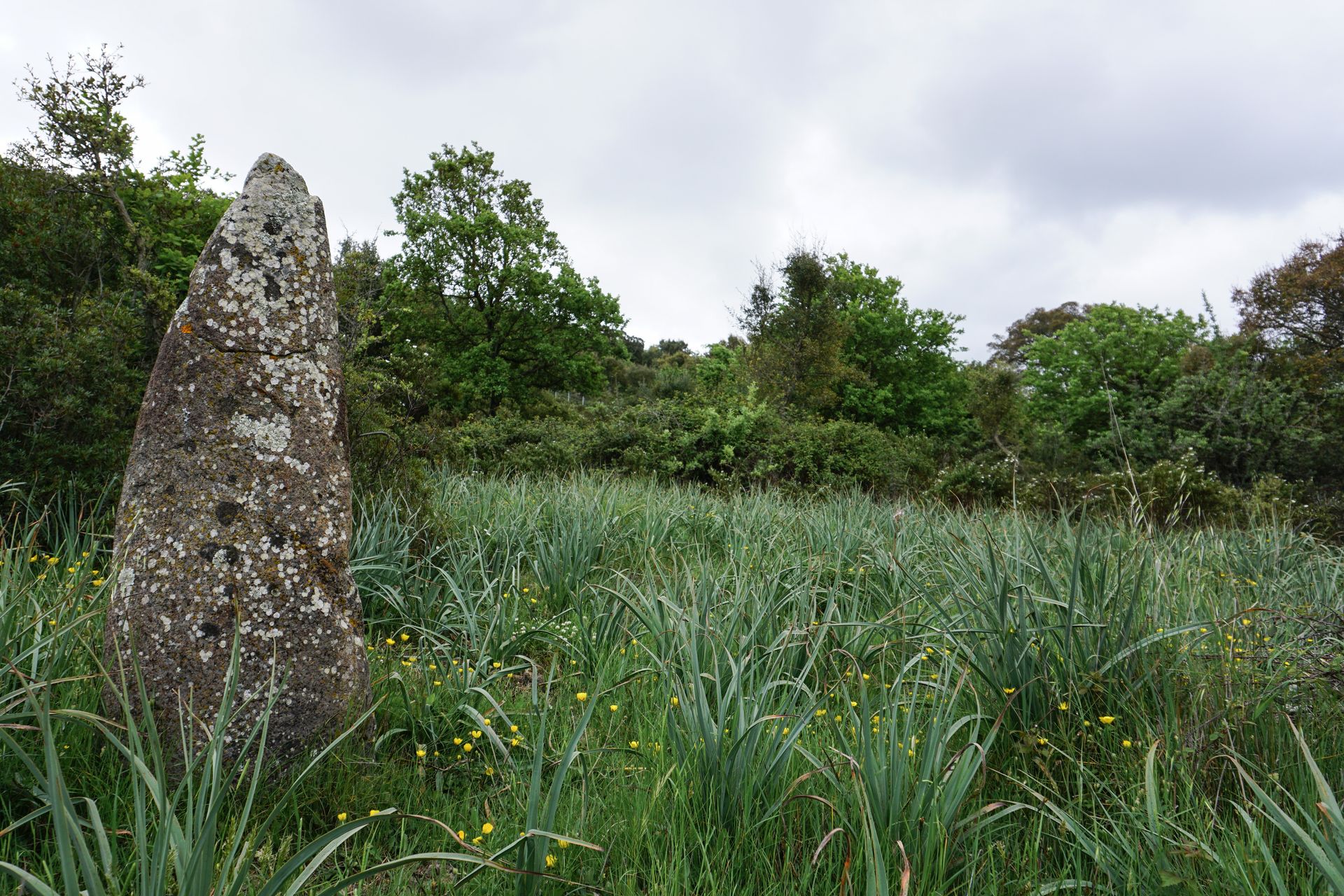The archeological site of Corte Noa is situated on the mild heights of Conca Zerfalìu, about 7km north of Laconi and across the Mindeorgi stream. Characterized by a series of menhirs and a covered walkway, it was recognized as an area of cultural significance by art. 13 of the D. Lgs. 42/2004.
The menhirs, seven in number and aligned along an axis running north-south, were created using small hammers and are free of figural representations. Their front sides are flat and their backsides are convex, with heights that range from 1.20 to 2.25 meters.
Whether they are religious symbols, personifications of ancestors or a system of orientation, their actual function is not entirely clear; it is possible that they allude to fertility and the circle of life. The nearby presence of seemingly out-of-place stone blocks leads one to hypothesize that there were once more monoliths in the area than the small number that can be seen today.
About 200 meters to the east and at a slightly higher elevation, one finds the covered walkway, a type of collective funerary monument orientated north-south and partly built within a rocky bank. Deprived of its covering, it is characterized today by lateral walls of rock slabs 1.50 meters high that form a rectangular body measuring 9 meters long and 1.60 - 2.10 meters wide.
Many of the archeological finds today exhibited at the Museum of Statue-Menhirs in Laconi originally came from here. For example, obsidian arrowheads, coils and small rings of silver, fragments of lead, long-necked vases, tripods and terracotta jars were all found here and ascribed to the Filigosa and Abealzu cultures, dating between 2,700 and 2,400 B.C.
Video: Il tempo del mistero
 Dolmens of Corte Noa (Ph. Nicola Castangia)
Dolmens of Corte Noa (Ph. Nicola Castangia) Dolmens of Corte Noa (Ph. Nicola Castangia)
Dolmens of Corte Noa (Ph. Nicola Castangia) Menhir of Corte Noa (Ph. Carlo Coni)
Menhir of Corte Noa (Ph. Carlo Coni) Menhir of Corte Noa (Ph. Carlo Coni)
Menhir of Corte Noa (Ph. Carlo Coni)